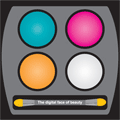The Digital Face Of Beauty: looking at the impact of Web 2.0 within the health and beauty category

The current generation of 18-24 year-old young women is the first to have grown up with mobile and internet technology shaping their attitudes towards brands and media communications.
The digital face of beauty looks at how Web 2.0 has - and has not - changed the behaviour of this first generation of 'digital natives' within the health & beauty category, and identifies the resulting opportunities for brands.
OVERVIEWAn eternal quest for the perfect product means young women are always open to new product temptations. In spite of – or perhaps because of – a proliferation of choice, young women pursue a never-ending search for the perfect health & beauty product. The internet has only intensified this quest for the perfect product, allowing them to question every choice.
Young women are their own health & beauty experts. Young women are using the internet to challenge traditional health & beauty advertising messages – consulting product-review sites and online forums for unbiased information and advice.
Young women are relatively unconcerned with ingredients; they just want a product that works. Overwhelmed by information, young women focus their online search on finding out if the product actually works.
In-store shopping is still a vital influence on purchase decisions. Even with the comparative information available online, young women still need to experience a product before commiting to a firsttime purchase.
Sales assistants can still make or break a purchase. While the internet can help consumers clarify their intentions before visiting the store, an unhelpful or pushy sales assistant can make a nearpurchase consumer leave without buying anything.
Traditional advertising should be grounded in reality. Female digital natives still use traditional health & beauty advertising (e.g. magazine, television outdoor) as a new-product alert. However, with product reviews and opinions quickly disseminated within Web 2.0, any over-claim will be exposed, threatening conversion of the new-product alert to a sale.
Digital communication should be used to give consumers a more actively engaging experience of the brand. Digital communication can build relationships and encourage sales if it is used to provide engaging and contextually-relevant content and services that bridge the gap between on- and offline experiences of the brand.
Download the full report (pdf, 3.23MB)